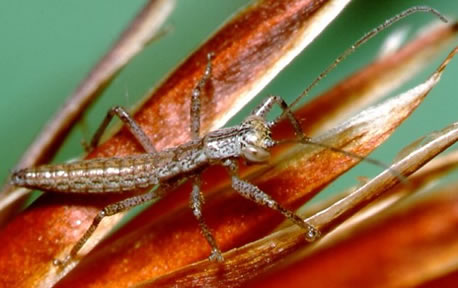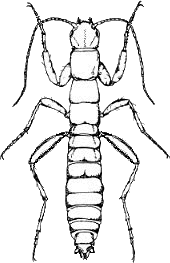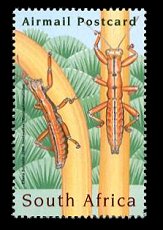Mantophasmatodea
Pronunciation: [Man⋅to⋅PHAS⋅ma⋅TO⋅de⋅a]
Pronunciation: [Man⋅to⋅PHAS⋅ma⋅TO⋅de⋅a]
Common Name: Gladiators / Heelwalkers / Mantophasmids
Greek Origins of Name: Mantophasmatodea is an amalgamation of the order names for praying mantids (Mantodea) and walkingsticks (Phasmatodea). It reflects the blend of physical and ecological characteristics found in these insects.

Hemimetabola, i.e. incomplete development (egg, nymph, adult)
Polyneoptera, closely related to Grylloblattodea
Rare. Found only in Tanzania, Namibia, and the southwestern corner of South Africa. There are 0 families and 0 species in North America and 1 family and 6-8 species worldwide
These insects are nocturnal predators. They live within rock crevices where they hide in clumps of grass and prey on spiders and other arthropods.

No economic importance. They are extremely rare.
Mantophasmatidae is the only family in this order. It contains three genera.
 Mantophasmids are found only in and around South Africa. This stamp was issued in 2008 to commemorate the International Congress of Entomology held in Durban.
Mantophasmids are found only in and around South Africa. This stamp was issued in 2008 to commemorate the International Congress of Entomology held in Durban.